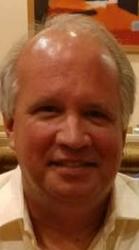Decisions. Decisions. Decisions. Three big decisions loom for Haas F1.
Haas F1 came into the Formula 1 world just a couple of years ago with the idea that a team can be run in a low-cost fashion. The factory is based in Kannapolis, North Carolina, and its parts facility is located in the old Manor team factory in Banbury, England. A third workplace is in Italy, run by the Dallara Corporation, designs the car’s chassis. Haas topped off its approach with a business relationship with Ferrari, one of the sport’s most prestigious racing manufactures.

Romain Grosjean (left) and Kevin Magnussen (photo, BBC)
The Haas team hasn’t placed anyone on the podium for its first two seasons, but the Haas chassis is undoubtedly one of the best in the field. The team came close, though. A pit crew mistake (tire installation during a pit stop) at the first round in Australia last year cost Romain Grosjean and Kevin Magnussen a shot at a podium finish.
Over the winter, rumors circulated that the team would have a new sponsor. One rumor suggested that it would be Sauber with Alfa Romeo. Haas would have had the cash flow coming from another Italian car manufacturer, Maserati.
But after a while–and with no answers forthcoming–it is evident that a deal wouldn’t eventuate.
Enter Rich Energy. The company felt it was a good time to put its name on a Formula 1 machine and go head-to-head with its prime competitor, Red Bull. A deal was consummated, but cracks in the foundation surfaced quickly. In June, CEO William Storey decided that enough was enough, expressing frustration with the team’s performance. The company would pull its sponsorship, he said.
The problem was that nobody had informed Haas or Rich Energy’s shareholders of that decision. With that, Storey was dismissed from the company, and shareholders asked Haas for forgiveness.

Courtesy, Racer
The drama didn’t end there. Just a week ago, Haas F1 decided to end the sponsorship, even though Hass cars would retain the black and gold sponsorship during this weekend’s race in Singapore. Then, even though the colors will remain, the text of the sponsorship will end after this week’s competition.
It’s just one more, of multiple, challenges that Hass F1 has faced this season. For one thing, Grosjean and Magnussen have run into each other twice during races this year. For another thing, the new Pirelli tires aren’t assisting in sustaining aerodynamic grip with the Hass chassis.
With a black cloud hovering over the team, the question is: What next?
For starters, the black and gold car will undoubtedly be gone. We also know that Grosjean’s contract will expire in December, and it’s questionable whether a renewal is in the offing. Magnussen has a one-year deal left on his contract, and it may not be a good idea to continue with this pair.
The name Nico Hulkenberg keeps popping up. One reason is that he is the only driver currently without a drive for next year. IndyCar drivers Scott Dixon and Alexander Rossi have expressed interest, too. But Hass team Manager Guenther Steiner feels that only Grosjean and Hulkenberg are the candidates in contention to join Magnussen. Hulkenberg and Magnussen get along well, and Steiner believes that if he pairs them together, things will work out. But the drivers’ situation is still up in the air, and time is running out.
To turn over a new leaf, Haas F1 needs to settle sponsorship, decide on its drivers, and better align tires with chassis.
While 2019 may be a season to forget for Haas, but looming on the horizon is F1 2020. Decisions made soon will go a long way toward answering the question of whether better times lie ahead.














